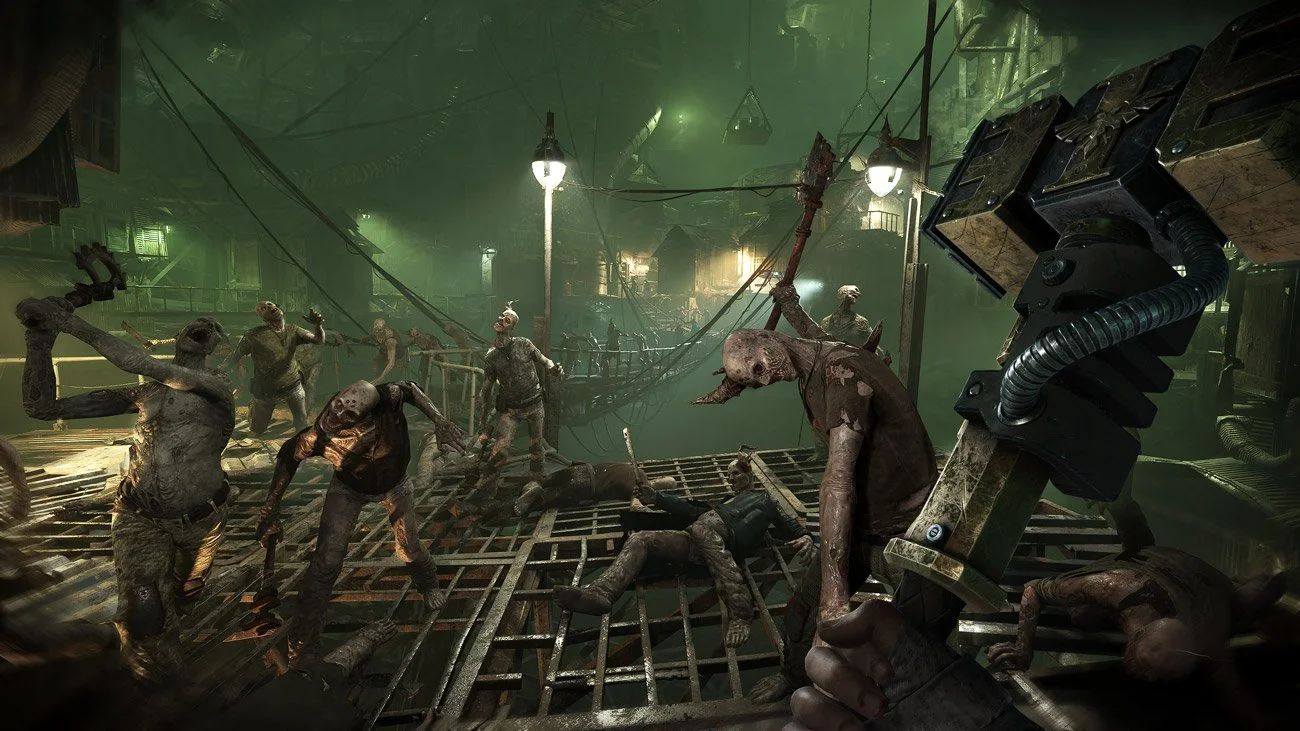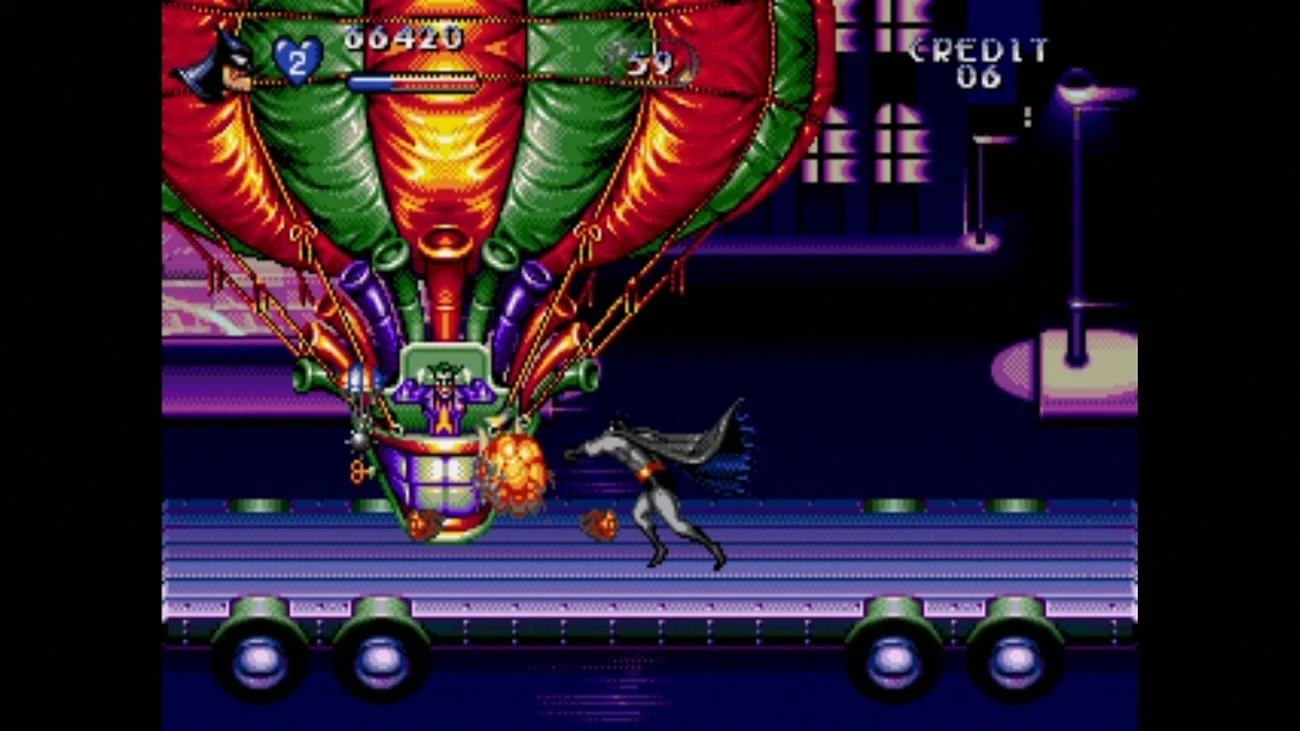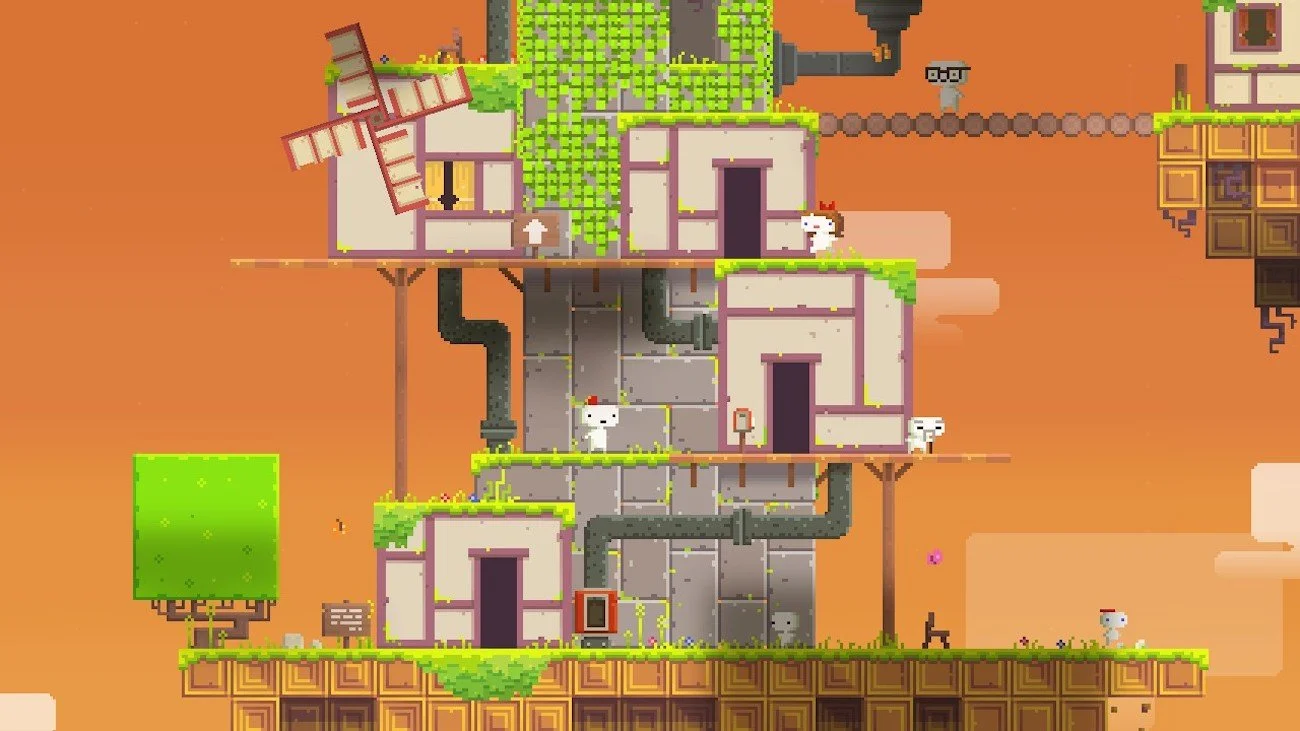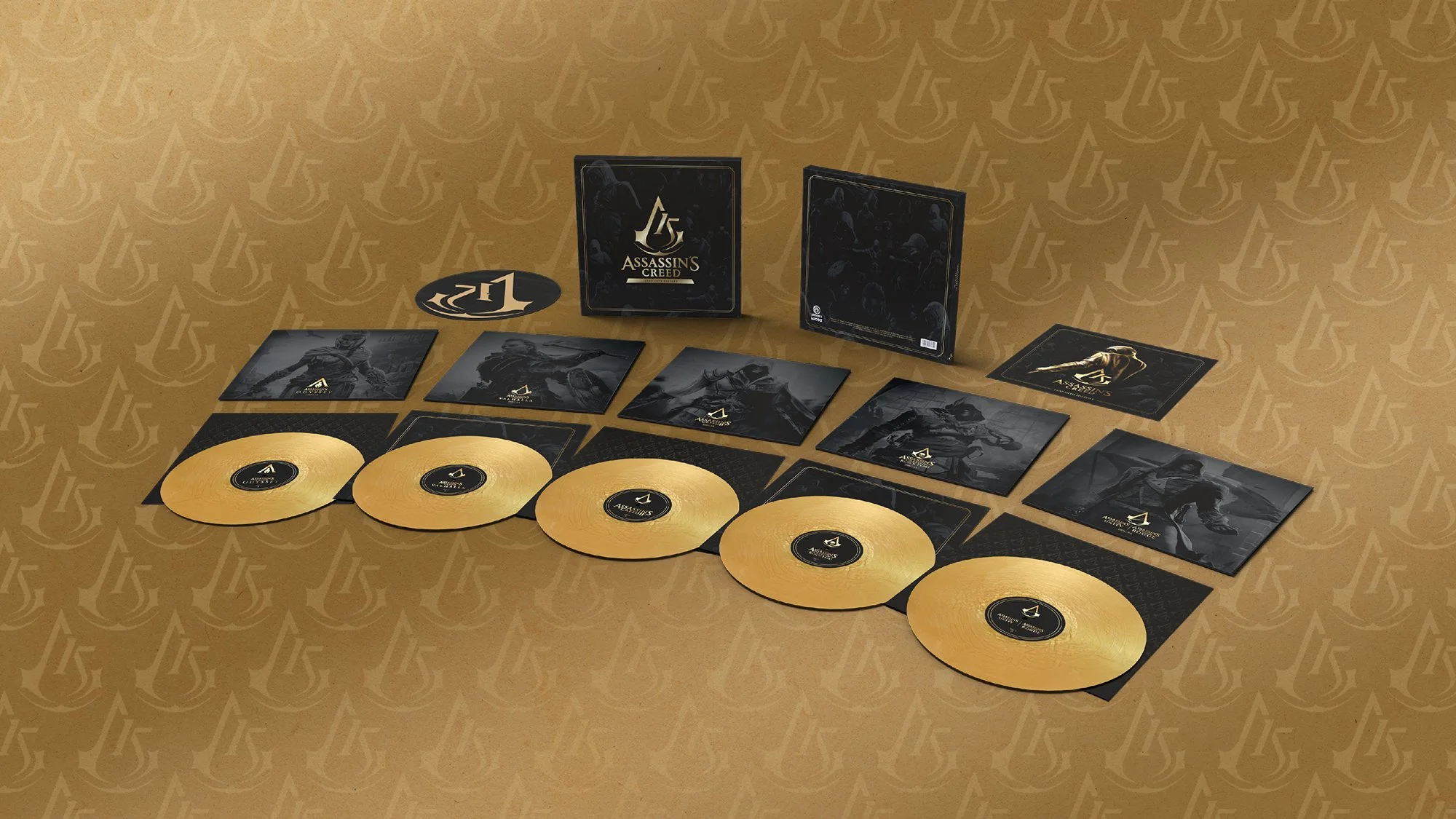How Jesper Kyd forged the grimdark rustpunk of Warhammer 40,000: Darktide
The veteran Assassin’s Creed and Hitman composer welded operatic choir with analog synths, duelling violins, and more for Fatshark’s brutal action shooter.
By Thomas Quillfeldt
With 2015’s Warhammer: End Times - Vermintide and 2018’s Vermintide 2, developer-publisher Fatshark delighted fans with co-op multiplayer gameplay in the lineage of Valve’s Left 4 Dead.
To capture the clash and crunch of the Heroes of Ubersreik’s struggle against the Skaven hordes, Fatshark twice turned to Jesper Kyd. The seasoned video game composer is known for his mastery of acoustic and electronic palettes, and has worked on numerous combat-heavy series including Borderlands and State of Decay.
Photo credit: Ben Bentley
Fatshark and Kyd once more collaborated on the spiritual successor to Vermintide, Warhammer 40,000: Darktide, launched in late 2022.
We caught up with the Danish composer to find out more about his approach to the 40,000 side of the Warhammer universe; how he harnessed his array of analog synths; and explore his sonic contributions to the Assassin’s Creed franchise.
The Warhammer 40,000: Darktide soundtrack album is available to stream and download via music platforms including Spotify and Apple Music: lnk.to/Warhammer40000Darktide
Check availability for the Warhammer 40,000: Darktide triple vinyl, featuring galaxy-effect discs and spot gloss outer sleeve.
Living machines, future folk and ‘rustpunk’
Kyd’s Darktide score is a fusion of elements: operatic, pseudo-religious choirs; anthemic pipe organs; mechanical, grinding sounds evoking rusting metal and machines; and more digital-sounding pads and patterns that speak to the far-flung, technology-driven future depicted.
He explains: “The game takes place in the 42nd millennium AD, or 39,000 years into the future of mankind. We wanted to create a score that was very specific to the world, so all the instruments needed to sound like they could be part of this distant future world.
“There are no outside references in the score. We wanted it to sound as unique as possible. The focus on realism meant we avoided popular ingredients used in other Warhammer scores, such as orchestra and electric guitars. This is the philosophy we adopted when creating the Vermintide scores and DLC as well — to create something completely original to the world.
“One of the first things Fatshark mentioned was that they wanted the score to support the setting of Tertium: a giant hive city with billions of inhabitants living inside. The city is full of ancient machines built thousands of years prior to the events of Darktide. At this time, people only know how to maintain these machines the size of city blocks, but not how they actually work. The inhabitants view these machines as something ancient and almost magical — something closer to living machines. Therefore, ‘living machines’ was the first key idea we talked about.
“This is reflected in the score and especially comes into focus on the track "Atoma Prime”, which has a sense of an electronic machine breathing or talking. The performance was created with the most alive and organic synth ever made, the Yamaha CS-80.”
We put it to Kyd that this overall sound could be labelled ‘rustpunk’ — a mixture of rusting metal and far-futurism. He responds: “The score is inspired by cyberpunk culture and sci-fi manga, which are often rooted in mixing unusual music styles to create a unique take on the distant future and the issues of importance in that time period. I mix a lot of acoustic performances, such as unusual live instruments and vocals, with driving electronic basslines and synth performances.
“There’s an underground vibe to much of the score, especially when players go down to the lowest levels — the Underhive — where things get really dangerous. This also fits with the journey of our character, since he/she starts as a ‘reject’ and must work himself/herself up.
“I collaborated with experimental acoustic instrument builder Diego Stocco and we did a lot of unusual live folk performances together such as ‘duelling violins’ and ‘zither vs folk piano’. I believe this is what you are referring to as ‘rustpunk’, which is a great observation. I look at this as a ‘rust-band’ because of the live nature of the performances.”
Reaching for the choir
As a musical instrument, the human voice has long been of significance to Kyd’s career.
Most gamers only need to hear 1-4 notes of “Ezio’s Family” from Assassin’s Creed II (you can hear it in your head already, I bet) to immediately conjure an association between Assassin’s Creed, Jesper Kyd and that ethereal female voice (Melissa Kaplan on the original versions.)
Warhammer 40,000: Darktide is a far cry from the beautiful, bright streets of Florence and Venice, however. To summon the sense of grandiosity required for political organisations like the Imperium and unthinkably giant settings like Atoma Prime, Kyd utilised voices as a powerful recurring musical force in the score.
He says: “The game is full of live recorded voices: both small folk group-inspired voices; and also the Budapest Scoring Choir, which was a joy to work with. The idea to use a choir stems from the journey you go on as an outcast before then being recruited to work for the Imperium. There's an almost religious side to the fanaticism that exists within the people devoted to the Imperium, and the game world is full of Imperium propaganda. Effectively, parts of the score serve as a propaganda tool for the Imperium.”
Thinking out of the box
Photo credit: Ben Bentley
The Darktide score was written using a lot of analog gear, drum machines and modular synths, with Kyd using the popular DAW (digital audio workstation) Cubase to assemble everything. Within Cubase, he added software synths to get the best of both analog and digital instruments.
“I have a huge vintage synth collection, and they were a perfect fit to help create the ancient ‘living machines’ vibe. These 40-year-old electronic instruments are full of aged components that make each one sound unique — they certainly don't sound fresh out of the box!
“It was important to use mostly hardware [as opposed to software-based versions of famous synths] since the organic nature of the score needed to be maintained in all the musical elements. This score has a distinguishable sound of being performed on synths and electronics, instead of everything being perfectly sequenced in a very tight, digital-sounding computer environment.
“One of the leitmotifs, the driving bassline in the main theme, is made with five vintage synths layered up to a 1975 analog sequencer. I love how you can push the ‘vibe’ and get it to a place where the sequence sounds like it's barely holding together; especially when carefully pushing the ‘swing’ to the max. It is its own world, and I love the hi-fi aesthetic of electronic equipment from the 1970s.
“All these elements come together to create a unique take on a dark and distant future. I love working on historically-inspired games and very much look at this score with a familiar point of view — except Darktide takes place in the future!”
Finding the groove, and electronic influences
Kyd’s background lies in computer music and the 1980s demoscene, coaxing the sound chips of the Commodore 64 (C64) and Amiga to make music.
As video game music changed and became ‘liberated’ (purists may argue ‘diluted’) by the possibilities of Red Book CD audio in the 1990s, so Kyd experimented with different live musical palettes. But he was always building on a solid foundation of electronic music making ability.
“When writing chiptunes on the C64, all we had was three channels to work with. Things sounded so bad that the only way to hook a listener was to write great melodies. Therefore rich melodic writing is part of my DNA — and continues to be so. On the Amiga, all we had was four sample channels — which birthed the tracker music style — so I learned everything about creating music with samplers.
“Then the rave scene [of the early 1990s] happened and many of my first game soundtracks were rave music-inspired, including The Adventures of Batman and Robin (which I wrote when I was 21 years old) and, later, Scorcher, MDK2 and Messiah.”
Although gamers might not immediately identify him as being a ‘groovy’ composer, Kyd has injected plenty of his cues with an identifiable swinging syncopation built around an insistent four-to-the-floor pulse.
“I went through most of the dance music styles and wrote entire albums’ worth of music in each style. Techno, Trance, House, Breakbeat, etc. I've always had a soft spot for writing detailed beats and percussion. Whenever there's an opportunity to bring that out, for instance in Darktide or recently Borderlands 3, I go full steam ahead!”
His favourite electronic music artists of the last few decades include many of the pioneers of synth-based music such as Vangelis (Blade Runner), Jean-Michel Jarre and Mike Oldfield; as well as Ryuichi Sakamoto, Haruomi Hosono and their hugely influential Japanese group Yellow Magic Orchestra.
“Of course, growing up in the 1980s in Europe, I was also influenced by Trevor Horn, who produced Frankie Goes to Hollywood, Grace Jones and Art of Noise, among others. Just great stuff that brought the world of sampling to the masses.” Kyd’s later electronic favourites include Röyksopp, Avicii and Daft Punk.
Electronic music: hard to do well
An awful lot of video game music is electronically produced. Understandably, that’s as much because of time, cost and practical efficiencies as musical taste. But even within the realm of purely electronic music, there’s infinite scope for creativity. Arguably, players — and perhaps even some developers — might not fully appreciate the possibilities available across analog and digital palettes.
The tide may have turned though, Kyd muses: “I do feel great electronic scores get noticed and respected. I think after DOOM (2016) [scored by Mick Gordon] came out and became mainstream, it helped carve a way for really good electronic soundtracks to get more respect. Perhaps DOOM reminded people that the most important thing is how well the music fits the game, not what music style it is.”
“There’s a lot of attention paid towards orchestral music. However, I feel a lot of orchestral music sounds almost the same — a lot of melodies and writing methods reused over and over. It makes complete sense, especially when films and TV shows are often temped [directors and editors editing scenes to pre-existing ‘temp’ music] with the same popular soundtracks that end up sending composers down similar, well-trodden paths. I don't receive temp music scores when writing for games, which leaves a lot of room for creativity.
“Electronic music is really hard to do well, and super easy to do in a mediocre way. Any composer can load up a software synth and have great electronic sounds at their fingertips, but this doesn’t mean they understand how to write great electronic music. If you've never enjoyed dance music, you can't just load up some beats and make an award-winning electronic music album.”
“Of course, these things can all be learned and the most important thing is to have passion. I have passion for the orchestra and electronic music equally, and that works for me. I tend to go back and forth between electronic-driven and orchestra-driven scores — although my next two scores are both orchestral scores. I especially like to blend those styles together, since that's the hardest thing to do, for me. It's two different writing methods battling each other, but once you figure out the blending that works the music tends to become unique, and I'm often surprised at the end result.
I don't respect one music style more than the other. To me, a great score is a great score, regardless of music style.”
Enriching nostalgia
Somewhat provocatively, we ponder whether some gamers and parts of the industry ought to move on from their nostalgia for the electronic sounds of the 8-bit and 16-bit console era in order for electronic-led video game music to progress.
Kyd pushes back: “Retro-styled games such as FEZ are pieces of art. The games and soundtracks are inspired by the design and music of the C64, the Game Boy, and so on; but they mix this with modern creative approaches to produce a fusion that celebrates a more minimal game style.
“Not everything needs to be as complex and cutting-edge as possible. A lot of fresh ideas are injected into the industry with these types of games, usually made by very small teams. There’s a reason why games like FEZ are so popular.”
“Also, I feel the music in retro and indie games is sometimes more memorable than some of the big video game franchises. When listening to music, for me, it's all about melody and atmosphere. Both are equals and both need to be great. Not a lot of music does both. Usually there's either a focus on impressing the listener or creating memorable melodic depth. Game soundtracks from the 1980s and ’90s had much more melody than soundtracks typically do today. The foundation of my music style is to try to work that balance between writing modern music and interjecting it with a lot of rich melodies.”
Call to action
Kyd points out that Darktide is more of an action game than the exploration-focused Assassin’s Creed Valhalla, for example. “The Darktide music therefore needed to be more immediate and full of pulses and heavy atmospheres. From the Horde music when you are attacked by huge crowds; to the Imperium missions that incorporate epic choir performances, the music sets the tone for a dystopian world.”
“The world of Warhammer is extreme, with slogans such as ‘There is only War’. Things are usually dialled up to 11, and that’s reflected here too, especially in an action game score.”
While certainly ‘grimdark’, Darktide isn't a horror game. And the world of Warhammer 40,000 is not so self-serious that players can't have a bunch of co-op fun with friends, even in the face of oppressive empires, hulking megastructures and freakish enemy hordes.
Kyd explains: “I was never meant to come in and write a score that scared players or even followed a strict storyline. It's about taking everything that's in this world and bringing it to life with music.
“There needs to be a musical accompaniment for all the different emotions and gameplay moments, so it's a broader view musically — a view that warrants a lot of research and balance. This is one of those things that makes video games unique and so fun to score. It's a totally different approach. In some ways, there's more room to go super deep into the lore than with other entertainment media.
“Once I get knee-deep in a score, everything I write sounds like it fits inside that world. Even if a cue doesn’t fit perfectly with the moment it's originally written for, it always ends up getting used somewhere, because I have entered Tertium [for the duration of the project] and everything I write is for the Emperor!”
Follow the creed
At the time of publishing, Ubisoft has been celebrating 15 years of Assassin’s Creed, with the franchise having grown into a gaming mainstay whose brand recognition puts it in the company of Grand Theft Auto and Call of Duty.
Kyd was the sole composer for the first three mainline Assassin’s Creed games (Assassin’s Creed, II, and Brotherhood) and co-composer for the fourth (Revelations), his music helping to lay the aesthetic foundations of the series. After a break of nearly a decade, he returned as co-composer for 2020’s Assassin’s Creed Valhalla.
The soundtrack to 2007’s Assassin’s Creed and 2009’s Assassin’s Creed II in particular captured the juxtapositions at the heart of the franchise: between advanced technology (as conceived of in the early C21st) and chronicled history; between the political intrigues of historical figures and untouchable deific aliens; between grisly back-alley assassinations and spectacular architectural sights.
Kyd recalls: “When this idea was first presented to me by the team [futuristic technology and abridged historical settings] I immediately resonated with it. Not only was it a great concept, but it also opened up the idea that history could be the playground of Assassin’s Creed. It was very important to the team that the Animus reminded us we were playing through a simulation, and this needed to be clearly communicated in the atmosphere of the game, including the score.
“I came up with the idea of not just mixing electronic sounds into the score because it was a sci-fi game but actually having a treatment for the music rooted in the story of the world. That idea became what I refer to as the ‘Animus filter’, a technique where historical instruments that fit the time period would be filtered in a modern way. For example, female vocals sounded unusual and ‘treated’ with the Animus effect.”
“It's an effect that I have used on all my Assassin’s Creed scores, especially in Assassin’s Creed Valhalla where the entire score is devoid of electronic instruments. The soundtrack is grounded in live performances played on ancient historical instruments, which I mostly performed myself this time. The performances were then heavily treated and filtered in order to add a lot of atmosphere, and to give a more spiritual feeling in honour of all the Viking gods that were so close to the heart of their culture.”
Getting some air in there
Just as voices are an important textural element for Kyd, so too is the bold, artistic use of reverb effects during the mixing process is of crucial importance to achieving the right sound.
Instrument to instrument, Darktide contains extremes of ‘dry’ and ‘wet’ elements (more or less reverb in the mix), and bigger or shorter reverb ‘tails’ (evoking larger or smaller spaces in which sound might echo). In general, Kyd’s Assassin’s Creed cues tend to feel like they have more ‘air’ in them, achieved through ‘wetter’ reverb mixing with longer ‘tails’, suggesting large spaces such as cathedrals, catacombs, and so on.
Kyd responds: “I’ve always been interested in atmospheric music. The ‘air’ approach came from the game itself. The early Assassin’s Creed II tests I was shown featured a highly atmospheric world with a focus on romantic settings and lighting. It was an unusual approach for a game where you play an assassin; but, then again, Ezio is not your typical [violent killer] character either. I knew right away the score would have to be very emotional to be able to not only match but actually enhance the deeply atmospheric nature of the game world. Ezio is such a free spirit that I just ran with this idea, fully supported with total creative freedom by the development team.”
“After the huge success of the original Assassin’s Creed, the team really set me free from the more restrained approach on that first game, where a lot of focus was placed on inventing all these core musical concepts, and also supporting the many new gameplay types through music.
“With Assassin’s Creed 2 I was free to completely focus on the setting and the story of Ezio. That creative freedom resulted in a unique score, as well as “Ezio's Family”. It's one of the best experiences I've had writing a score. It's amazing to think back on this period — going back to write Assassin’s Creed Valhalla felt like coming home, in a sense.”
Suite disposition
The Assassin’s Creed Symphonic Adventure concert tour, part of the 15th anniversary celebrations, features music from across the series. Kyd created the “From The Depths of History” Overture specially for the programme, saying: “It was delightful to write. I’ve been involved with a lot of the orchestral suites of my music that are currently being played worldwide, from the ‘Ezio's Family Suite’ to the ‘Hitman Suite’.”
“I take great pride in putting these together with my team. When writing music for the orchestra, it's very different in the sense that what you are hearing is not going to be the final sound of the score. It's going to be performed by a group of musicians and each and every note needs to be in perfect harmony with each other. Or perfect disharmony. But everything you do needs to be done with purpose and total conviction. Whereas my more sonically unique scores can come from a place of total experimentation, where the orchestra or live instruments play a more supporting role.
“It's always exciting to hear my music performed live by a group of musicians interpreting the ideas written down on paper. It's a beautiful thing.”
Jesper Kyd is a video game composer - www.jesperkyd.com | Spotify Artist Profile | Twitter.com/JesperKyd | Facebook.com/JesperKydOfficial | Instagram.com/kyd.jesper | Youtube.com/@jesperkyd
The Warhammer 40,000: Darktide soundtrack album is available to stream and download via all major music platforms: lnk.to/Warhammer40000Darktide
Check availability for the Warhammer 40,000: Darktide triple vinyl, featuring galaxy-effect discs and spot gloss outer sleeve.
Check availability for the Assassin’s Creed - Leap Into History 5LP box set, featuring a selection of 70 favourites from 12 mainline titles.
Find out more about the Assassin’s Creed Symphonic Adventure - assassinscreedsymphonicadventure.com















